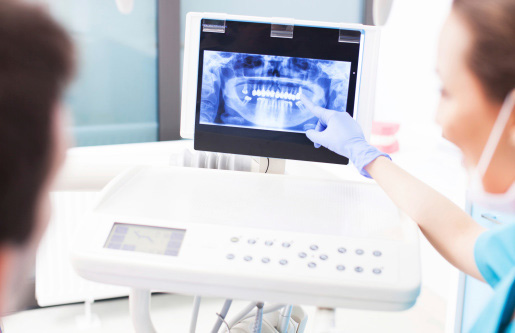Digital Impressions for Prosthodontics Digital impression technology has streamlined prosthodontics from start to finish. Traditional methods rely on physical molds, but digital impressions offer a more accurate, efficient, and comfortable way to capture the oral structures and create precise dental restorations. Digital impression technology has streamlined prosthodontics from start to finish. Traditional methods rely on physical molds, but digital impressions offer a more accurate, efficient, and comfortable way to capture the oral structures and create precise dental restorations. What Are Digital Impressions?Digital impressions are high-resolution 3D scans of a patient's oral structures, captured with intraoral scanners. These scanners use lasers to record detailed images of the teeth and gums and eliminate the need for traditional molds. The data is converted into a digital model that displays a model of the mouth. With these 3D models, we can make precise adjustments, simulate treatment outcomes, and design custom restorations for each individual patient's needs. Digital AdvantagesDigital impressions offer numerous benefits over conventional techniques. Improved AccuracyDigital impressions minimize the inaccuracies that occur in physical impressions. This precision is crucial in prosthodontics, where the slightest distortion affects the fit and function of the restoration. Enhanced Patient ComfortDigital impressions are more comfortable than traditional impressions, especially for patients with sensitive gag reflexes because they do not require bulky trays or impression material. Time EfficiencyDigital impression systems streamline our workflow with instant capture, processing, and transmission of data. This reduces the need for repeated appointments and speeds up the process for our team, and more importantly, our patients. Easy Storage and TransferDigital models are stored electronically. This makes them easy to access and share instantly with dental labs and other specialists. Patients benefit by receiving faster adjustments and replacements. The Digital Impression to Restoration ProcessThe digital impression process has several steps. Intraoral ScanningTo start, we capture detailed images of the patient's teeth and surrounding structures using an intraoral scanner. Data ProcessingOnce the scan is complete, the digital impression software processes the data and generates a 3D model. The model can be examined in detail to plan treatments with precision. Computer Aided DesignThe digital model is used in CAD/CAM software to design and fabricate custom prosthetics, such as crowns, bridges, or dentures. Fabrication and FittingOnce the prosthetic is created, it is tested for fit and comfort. Precise digital models result in fewer adjustments. Digital impressions provide a more accurate initial fit. Applications in ProsthodonticsDigital impressions are valuable in many prosthodontic applications. Crowns and BridgesPrecise digital impressions are essential to create precise fitting crowns and bridges. Digital impressions enhance durability, appearance, and function. Implant RestorationsDigital impressions capture the angulation and depth of implants more accurately, which is essential to creating successful implant prosthetics that fit properly. DenturesDigital impressions contribute to more precise fabrication of full and partial dentures and reduce the time needed for adjustments and fittings. The FutureThe future of digital impressions is promising. Scanner technology and CAD/CAM integration continue to advance. Artificial intelligence (AI) and machine learning will improve data processing and make diagnoses and planning even more accurate. In addition, as intraoral scanners become more cost-effective, even the smallest dental practices will adopt the technology, and their patients will benefit. |

Contact Information3709 University Dr Suite D Durham, NC 27707-6224 (919) 489-8661 info@mydurhamdentist.com Follow Us |